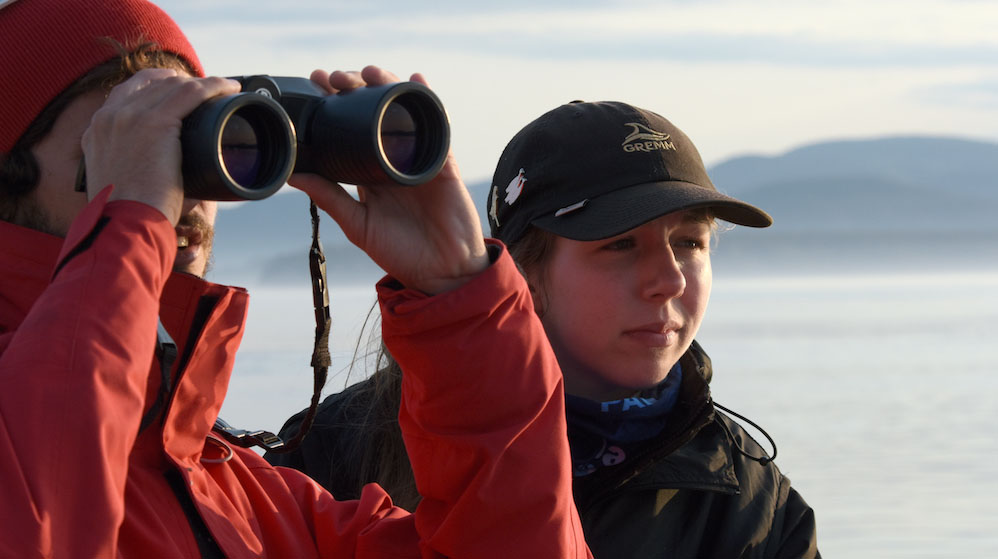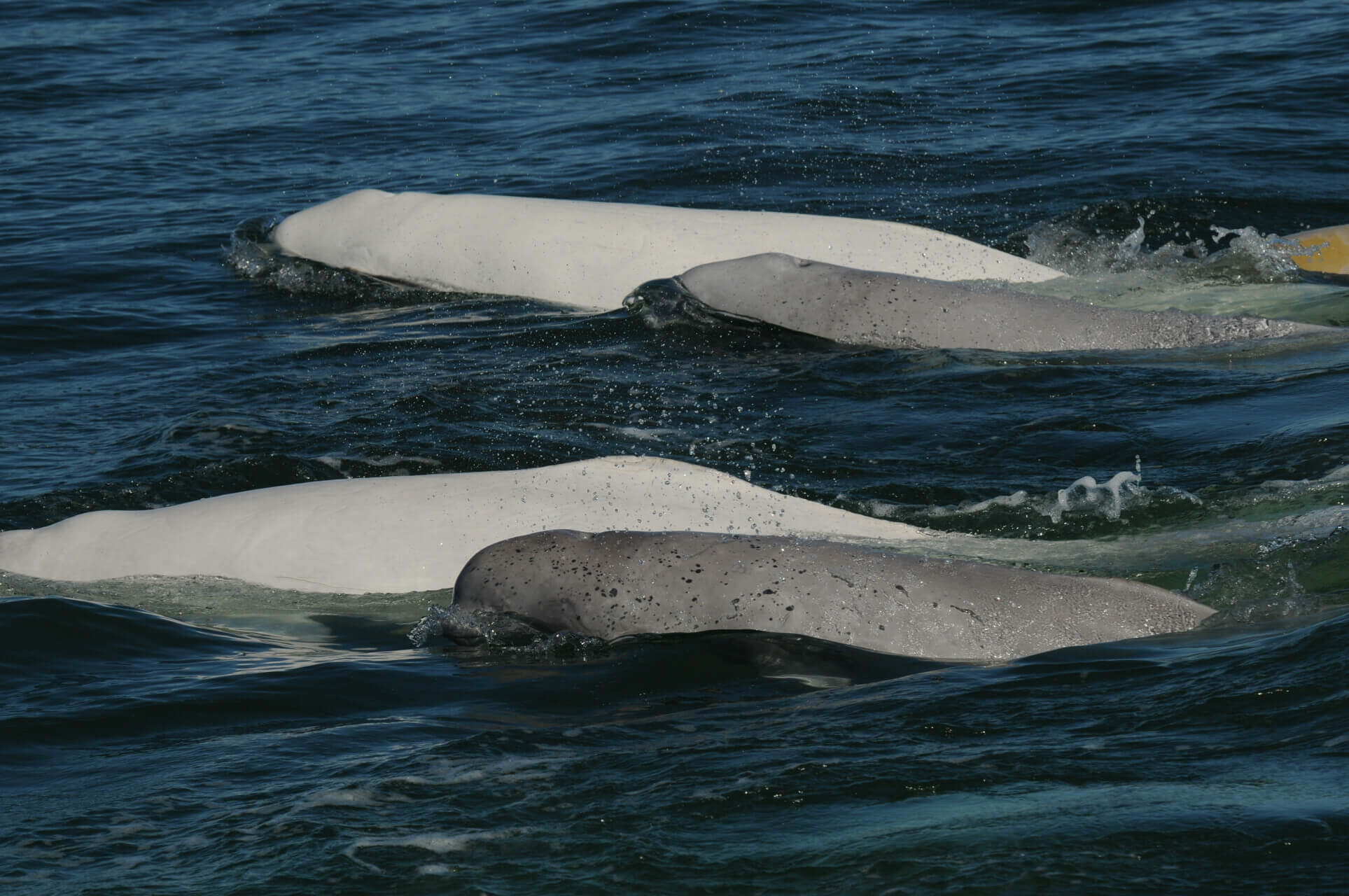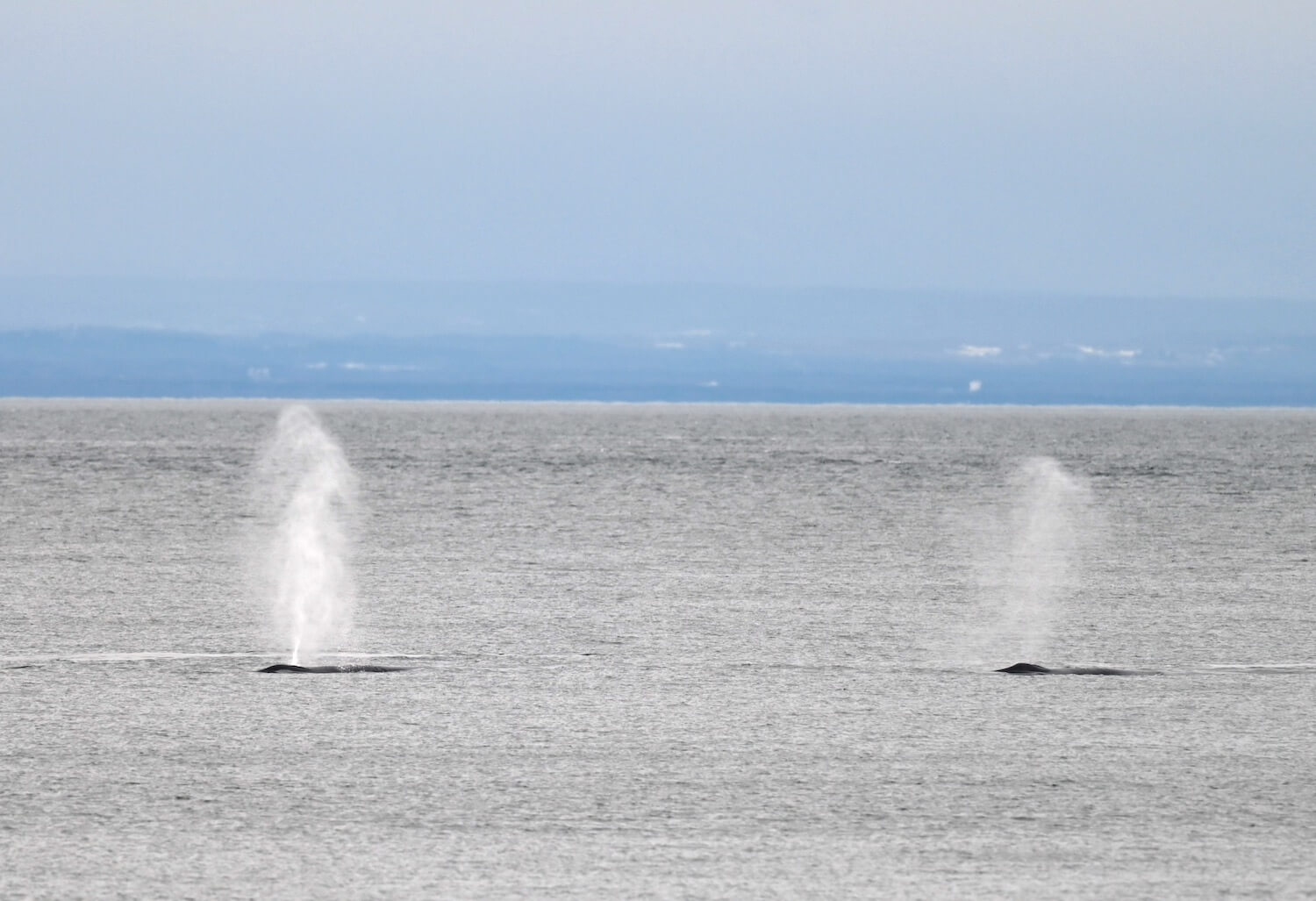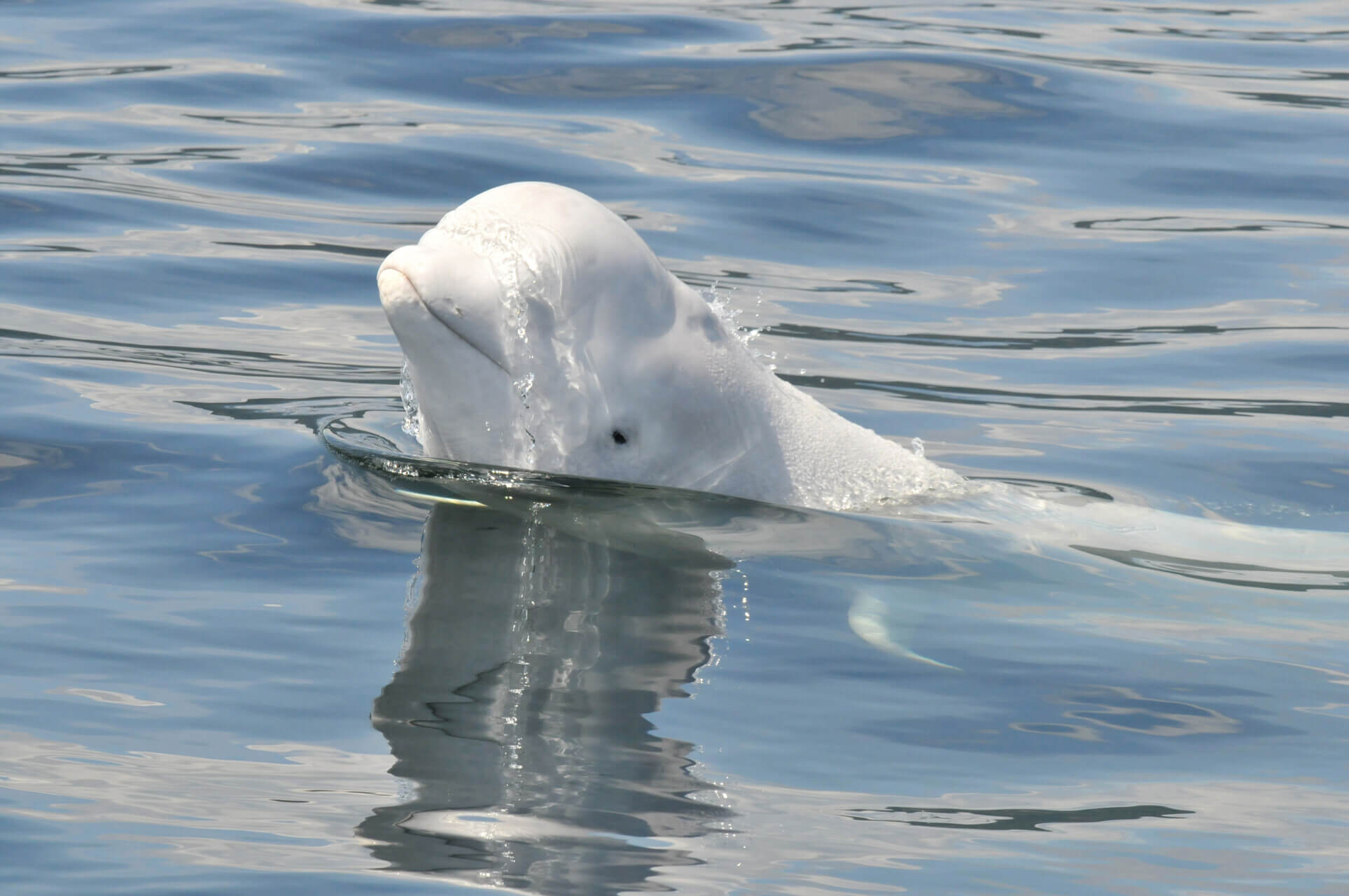In an interview with Hal Whitehead, researcher at Dalhousie University, Canada, Whales Online asked him the following question: What makes whales breach?
H. W. :
It is believed that this behaviour often represents the maximum power that a whale is able to exert. It exits the water at full speed, vertical or nearly vertical, and lands on its side, back or belly. The resulting splashes are sometimes visible from several kilometres away. Whales occasionally even perform multiple consecutive breaches. To our knowledge, the record belongs to a humpback in the Caribbean: 130 breaches in 75 minutes! Not all whale species breach as much. Humpback, right and sperm whales breach often. The minke whale is much more discreet, except in the St. Lawrence, where its feats are comparable to those of the best “breachers”.
So why breach? Young individuals might do so to play or develop their muscles. In certain circumstances, adults probably breach to convey messages to other members of their group. Indeed, as breaching requires a great deal of energy, a whale can thus demonstrate “what it is capable of.” More rarely, breaches might be attributable to other factors. For example, it might be a technique to capture prey by scaring or stunning them, rid themselves of external parasites, or breath in strong wave conditions. Who knows? What is known is that this behaviour is simply awesome for observers at the surface!





